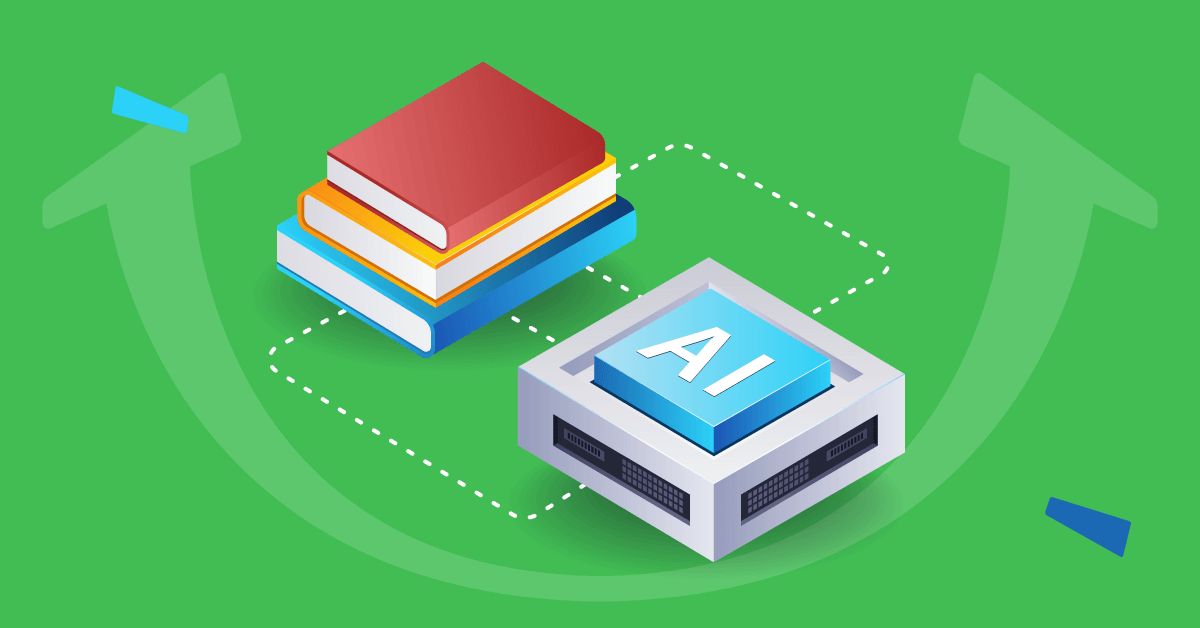There’s a lot of buzz around how artificial intelligence (AI) is changing jobs, and plenty of speculation about how it will impact the workforce.
For instance, one recent study shows that 19% of the U.S. workforce could see over half of their tasks automated by AI in the near future.
Statistics like this are driving headlines about potential job losses and jobs that AI will replace. But is there truth in all this hype?
Ronald Ashri discusses on “Preparing for the AI-workforce”, from TalentLMS’ podcast series Keep it Simple, whether AI will take over our jobs. He claims that using technology is a big “yes.” But people need to discover where to use it and how to make the most of it at work.
In reality, what AI is doing is taking over more admin and structured tasks. And rather than panic, the workforce can adapt by rethinking the nature of jobs.
Preparing for jobs in the age of AI means taking this opportunity to start creating more meaningful work.
The quest for meaning in the workplace
People want jobs that have purpose and significance. For today’s employees, work is not merely a means of earning a living. It’s a fundamental part of their identity and well-being.
But many are still falling short of the mark. According to one poll, only a little over half of American workers say their job makes a significant contribution to the world.
Why meaningful work matters
The desire to make a difference is rooted in human psychology. It aligns with Maslow’s hierarchy of needs, where the pursuit of personal growth and fulfillment is at the pinnacle of human needs.
When people don’t feel like their job matters, productivity drops. Employees may engage in career cushioning. That is, looking for alternative jobs while going through the motions of their current employment.
On the other hand, when people feel their job makes a difference, they’re more engaged and motivated.
Organizations that cultivate a culture of meaningful work reap significant benefits as well. Engaged employees are more productive, committed, and less likely to leave the organization. They are also more likely to become brand ambassadors, promoting the company’s values and reputation.
Use training to boost employee engagement and retention
Build and deliver courses that learners love with TalentLMS.
The training platform that users consistently rank #1.
What does meaningful work look like?
The following characteristics define work that is engaging and fulfilling:
- Impact. People need to feel that their work contributes to a larger purpose. For instance, improving society, advancing knowledge, or creating something of value.
- Autonomy. Workers crave the freedom to make decisions and exercise creativity.
- Growth. Learning opportunities let people see how their work is helping them grow.
- Community. People need a sense of belonging and connection with colleagues.
- Recognition. Acknowledgment and appreciation boost morale and reinforce the value of people’s work.
How AI can help
Repetitive administrative tasks can make even the most important jobs feel meaningless.
You can leverage AI at work to automate mundane tasks, freeing up employees to focus on activities that align with their skills and interests.
Instead of asking, “What jobs will AI replace?” try asking, “How can AI make my employees’ lives better?”
AI can handle tasks like data entry, administrative HR duties, report generation, and routine scheduling. Freeing up employees for tasks that need creativity, problem-solving, and human interaction.
For instance, AI-powered chatbots can handle customer inquiries and support requests. This lets customer service reps address more complex issues and provide personalized assistance.
Similarly, AI-driven tools can automate data analysis and financial forecasting. So accountants and analysts can focus on strategic planning and decision-making.

Beyond AI: Four strategies for building meaningful jobs
Besides leveraging AI, you can use a variety of tactics to foster meaningful work. Here are four strategies to help employees find value and meaning in their work experience.
1. Promote employee voice and ownership
Encourage employees to share ideas, provide feedback, and contribute to decision-making processes. You can get them more involved by asking for feedback. And by including them in decision-making.
For instance, conduct surveys, hold focus groups, and create open-door policies to gather employee input. Ask about topics like company culture and product development.
Give employees the autonomy to make decisions within their scope of work. While they can’t always choose which tasks they do, could they have more say in how or when they do them?
You can also help people speak up by recognizing and rewarding employee suggestions.
2. Connect work to social impact
Help people feel their work is meaningful by showing them the bigger picture.
Share client success stories with your team regularly. Help them see how the work they do contributes to solving problems and making lives better.
You can also bring meaning to work by engaging employees in social initiatives and volunteer opportunities. For instance, partner with non-profit organizations. Let employees share their time and skills to support causes they care about.
You could also establish company-wide initiatives that focus on environmental sustainability, ethical sourcing, or community engagement. Allow employees to contribute to positive social and environmental impact.
3. Provide opportunities for learning and growth
People will find more satisfaction in their work when they set goals and have a roadmap for reaching them. Offer them chances for learning and development throughout their careers with you.
Opportunities for upskilling and reskilling also show your commitment to your employees’ long-term success. And they’ll feel better staying with a company that’s willing to invest in their future.
You can support employee growth through things like:
- Training programs. Offer a variety of courses to help employees develop new skills. Ensure they stay up-to-date with industry trends.
- Mentorship opportunities. Connect experienced employees with those seeking career guidance. It will help support knowledge transfer and professional development.
- Tuition reimbursement. Provide financial assistance to employees who pursue further education or certifications. You’ll show support for their professional growth aspirations.
(Pro tip: Employ artificial intelligence in training to improve the experience. It can handle basic admin, improve course content, and even personalize training paths for individual learners.)
Meet TalentLibrary™
A growing collection of ready-made courses that cover the soft skills
your teams need for success at work
![]()

4. Foster a culture of recognition and appreciation
Show employees you value their work by consistently acknowledging their achievements.
This might be through a formal recognition program. Something like employee of the month or peer-to-peer recognition awards. Or company-wide celebrations for significant achievements.
It can also mean incorporating recognition into everyday interactions. You might encourage managers to express gratitude for good work through emails or informal conversations.
Whatever it looks like, be sure to link recognition to organizational goals. You need to reward efforts that align with the company’s values and objectives so people can see how their work contributes to them.
It also ensures you’re praising people for the work that’s central to their jobs.
Use AI to support meaningful work
Fostering a workplace that cultivates purpose and growth makes for a more fulfilling work experience. And AI offers a good opportunity to free up employees to seek out meaningful work.
As AI continues to integrate into the workplace, its potential to support worthwhile work will only grow. Embracing it as a tool to empower employees will help you attract and retain top talent.
It will also help you build a culture of engagement and innovation so you can succeed in the ever-changing world of work.
| Tags: artificial intelligence,Employee Engagement,retain employees



